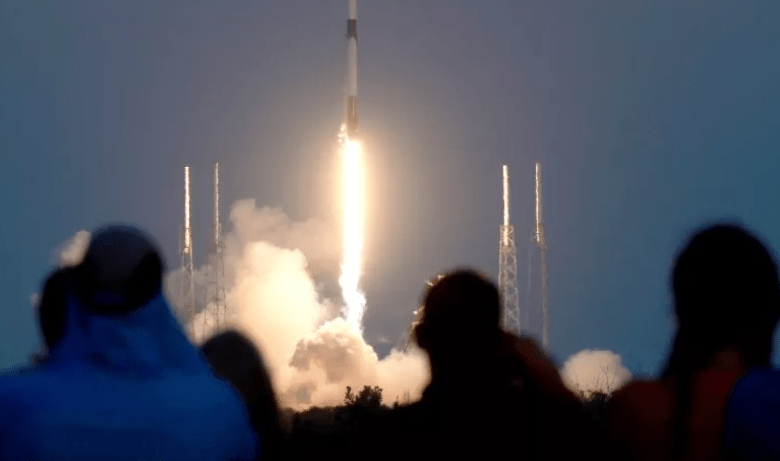China on Tuesday sounded the alarm that American spacecraft manufacturer SpaceX’s launch of next-generation satellites pose a national security threat.
The Elon Musk-helmed company’s initial batch of 21 satellites equipped with a direct-to-cellular payload are the first of over 800 planned for the first half of this year.
Though there are currently over 5,000 Starlink satellites in orbit, this new variety will effectively function as a cell phone tower directly transmitting signals to mobile phones—even those in remote “dead zones.”
In an article published Tuesday, the Chinese People’s Liberation Army’s official news outlet said SpaceX’s plans to launch 15,000 satellites as part of Washington’s Starshield program will lay the groundwork for “a rapid closed kill chain by the U.S. military.”
Last fall, the Pentagon awarded SpaceX a contract to develop its “end-to-end” Starshield network. The company says this military-purposed version of Starlink will initially be responsible for tasks including observation and worldwide communications services for American government services.
These capabilities will “serve as a crucial lever for the U.S. to achieve space dominance,” the PLA mouthpiece said. The authors also warned Starshield’s low orbit satellites will be capable of conducting “suicide missions” against the space assets of other countries.
The authors of the piece added that this will have a significant impact on strategic stability in space, “intensify the space arms race,” and adversely affect “space security and governance.”
“The most challenging threat is China but also Russia,” U.S. chief of space operations Gen. Bradley Saltzman told media early in 2023. Washington should “account for the fact that space as a contested domain has fundamentally changed. The character of how we operate in space has to shift, and that’s mostly because of the weapons (China) and Russia have tested, and in some cases, operationalized.”
He listed anti-satellite missiles, ground-based directed energy, and orbit interception capacities as examples of these emerging technologies.
In early 2022, a team of Chinese researchers with ties to the country’s defense industry published a study calling for the establishment of “a combination of soft and hard kill methods” that could disable some Starlink satellites.
One concern of theirs was that Starlink could be used to boost the data transmission speed of U.S. fighter jets.
The same day the China Military Online report dropped, China put a satellite-bearing Long March rocket into orbit. As it exited the atmosphere, the projectile passed just south of Taiwan, prompting the self-ruled island to issue a nationwide air raid alert.
During the early stages of Russia’s invasion many of Ukraine’s communication networks were damaged or destroyed. Starlink terminals provided by SpaceX have subsequently facilitated a counteroffensive by Ukrainian forces.
SpaceX inked the direct-to-cellular deal with mobile carriers in August 2022.
SpaceX last year told the U.S. Federal Communications Commission it plans to send up some 840 direct-to-cellular satellites in the first six months of 2024.

Leave a Reply